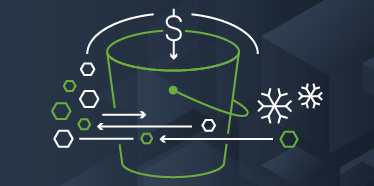As cloud computing continues to revolutionize the way organizations manage and store data, Amazon S3 remains a cornerstone of cloud storage solutions. In 2024, Amazon S3 Intelligent Tiering emerges as a game-changer, offering organizations a cost-effective and efficient way to manage data storage. This article explores the advancements and benefits of S3 Intelligent Tiering in 2024, providing insights into its features, use cases, and best practices for optimizing storage costs and performance.
Understanding S3 Intelligent Tiering
Amazon S3 Intelligent Tiering is a storage class designed to optimize storage costs by automatically moving data between two access tiers: the frequent access tier and the infrequent access tier. In 2024, this storage class has evolved to offer enhanced capabilities, including improved cost optimization algorithms, faster data retrieval times, and greater flexibility in managing data lifecycle.
Key Features and Enhancements
In 2024, S3 Intelligent Tiering boasts several key features and enhancements that make it a compelling choice for organizations seeking to balance cost efficiency with performance:
- Cost Optimization Algorithms: Advanced algorithms analyze data access patterns and automatically move objects between access tiers based on their usage, ensuring that frequently accessed data remains in the frequent access tier, while less frequently accessed data is transitioned to the infrequent access tier to reduce storage costs.
- Improved Performance: With enhancements in data retrieval mechanisms and caching technologies, S3 Intelligent Tiering offers faster data retrieval times, ensuring that organizations can access their data quickly and efficiently, regardless of its access tier.
- Lifecycle Management: S3 Intelligent Tiering allows organizations to define lifecycle policies to automate the transition of data to lower-cost storage classes or delete objects that have reached the end of their lifecycle, streamlining data management processes and reducing storage costs over time.
- Cost Monitoring and Analysis: Robust cost monitoring and analysis tools provide organizations with insights into their storage usage patterns, allowing them to optimize their storage strategies and identify opportunities for further cost savings.
Use Cases and Benefits
S3 Intelligent Tiering is well-suited for a wide range of use cases across various industries, including:
- Data Lakes: Organizations can use S3 Intelligent Tiering to store data lakes, leveraging its automatic tiering capabilities to optimize storage costs while ensuring fast and efficient access to frequently accessed data for analytics and data processing tasks.
- Backup and Archiving: S3 Intelligent Tiering can be used for backup and archiving purposes, allowing organizations to store large volumes of data cost-effectively while maintaining the flexibility to access data quickly when needed.
- Content Distribution: Content distribution platforms can leverage S3 Intelligent Tiering to store and serve media files, ensuring high-performance delivery of content to end-users while minimizing storage costs.
Benefits of S3 Intelligent Tiering
- Cost Efficiency: By automatically moving data between access tiers based on usage patterns, S3 Intelligent Tiering helps organizations optimize storage costs without sacrificing performance.
- Simplified Management: With automated lifecycle management and cost monitoring tools, organizations can streamline data management processes and reduce administrative overhead.
- Scalability and Flexibility: S3 Intelligent Tiering scales seamlessly to accommodate growing data volumes, providing organizations with the flexibility to adapt their storage strategies to changing business needs.
Best Practices for Optimizing S3 Intelligent Tiering
To maximize the benefits of S3 Intelligent Tiering, organizations can follow these best practices:
- Understand Data Access Patterns: Analyze data access patterns to determine the optimal storage class for each object based on its frequency of access.
- Define Clear Lifecycle Policies: Define clear lifecycle policies to automate the transition of data between access tiers and the expiration of objects that are no longer needed.
- Monitor and Analyze Costs: Regularly monitor and analyze storage costs to identify opportunities for further optimization and cost savings.
- Leverage Object Tagging: Use object tagging to categorize and organize data, making it easier to manage and apply lifecycle policies based on specific criteria.
In 2024, Amazon S3 Intelligent Tiering emerges as a powerful storage solution for organizations seeking to optimize storage costs while ensuring fast and efficient access to data. With its advanced features, use cases, and best practices, S3 Intelligent Tiering offers a compelling value proposition for organizations across various industries, enabling them to streamline data management processes, reduce storage costs, and drive innovation in the cloud.

